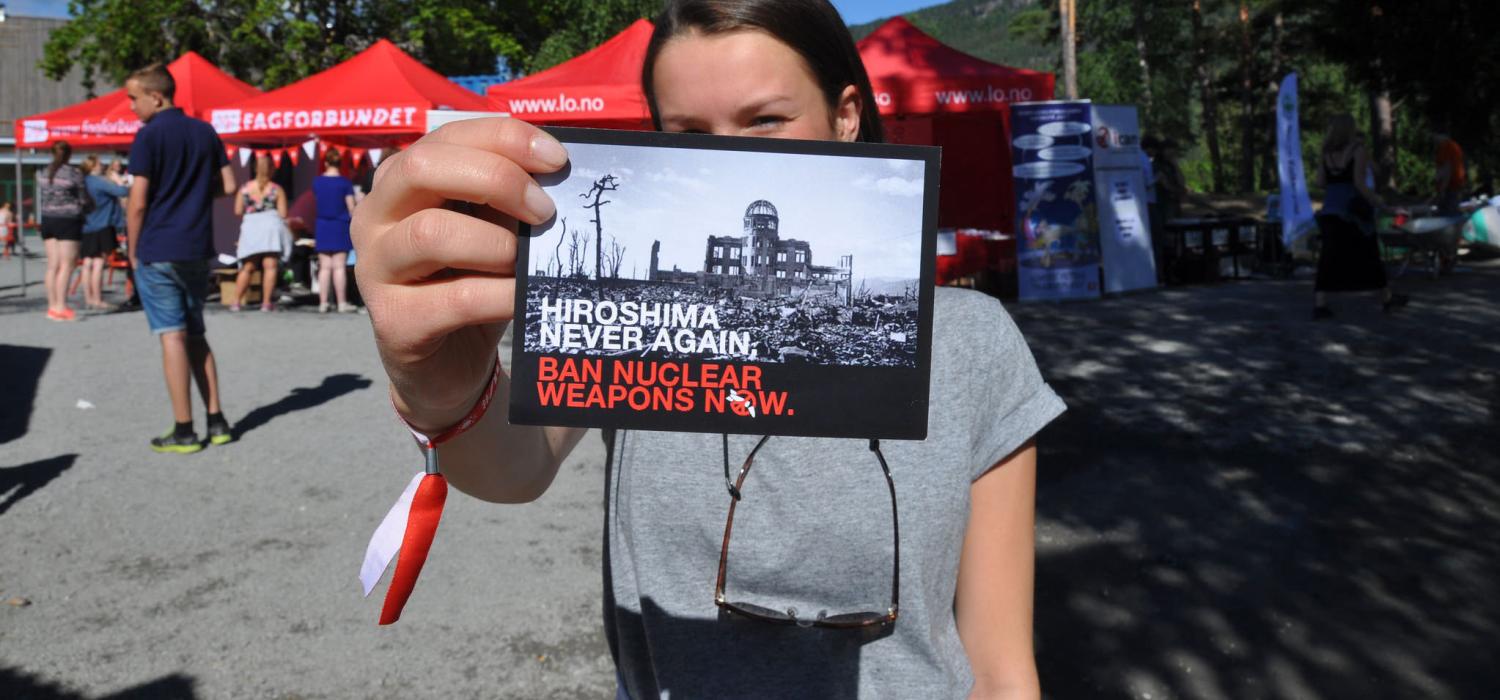Nuclear weapons are the ultimate weapons of war and therefore the ultimate weapons to prevent and avoid war. This two-axis struggle is captured in competing treaties for setting global nuclear norms and policy directions. This also reflects the mantra of realism - amended to include the importance of good governance in the modern world - that international politics consists of the struggle for ascendancy of competing normative architectures. Military muscle, economic weight and geopolitical clout stand arrayed against values, principles and norms.
For almost half a century, the normative anchor of the global nuclear order has been the Nuclear Non-Proliferation Treaty (NPT). On 7 July, 122 states voted to adopt a new Nuclear Weapons Prohibition Treaty (or ban treaty). This new treaty was opened for signature in the UN General Assembly on 20 September and so far four countries have ratified and another 49 have signed. The ban treaty will come into effect 90 days after ratification by 50 states.
As John Carlson among others has argued, the ban treaty has its technical flaws and even its advocates concede it will have no operational impact as all nuclear weapon possessing states have stayed away. Yet this treaty inspired by humanitarian principles is historic on five counts.
It is the first treaty to ban the possession, transfer, use and threat of use of nuclear weapons. This completes the legally binding prohibition of all three classes of weapons of mass destruction, after biological and chemical weapons were banned by universal conventions in 1972 and 1993 respectively. Like the NPT, the ban treaty is legally binding only on signatories. Unlike the new treaty, which applies equally to all signatories, the NPT granted temporary exemptions for the continued possession of nuclear weapons by the five nuclear weapon states that already had them in 1968, but banned proliferation to anyone else.
Second, the ban treaty’s adoption marks the first divergence between the UN and the NPT that hitherto have had a mutually reinforcing relationship. The NPT has its origins in several resolutions adopted in the General Assembly. Instances of non-compliance with binding NPT obligations require enforcement measures by the UN Security Council. But while almost two-thirds of NPT parties voted to adopt the ban, a strong one-third minority, including the five permanent members of the Security Council (P5) – who coincidentally are the five nuclear weapons states – rejected the new treaty.
Third, this is the first occasion in which states on the periphery of the international system have adopted a humanitarian law treaty aimed at imposing global normative standards on the major powers. The major principles of international, humanitarian and human rights laws have their origins in the great powers of the European international order that was progressively internationalised. Ban treaty supporters include the overwhelming majority of states from the global South and some from the global North (Austria, Ireland, New Zealand, Switzerland). The treaty’s opponents include all nine nuclear weapons possessing states (the five nuclear weapons states, plus India, Israel, North Korea, and Pakistan), all NATO allies, and Australia, Japan and South Korea. Thus for the first time in history, the major powers and most Western countries find themselves the objects of an international humanitarian treaty authored by the rest who have framed the challenge, set the agenda and taken control of the narrative.
Fourth, this is the first time that the like-minded liberal internationalist states find themselves in the dissident minority in opposing a cause championed by the Nobel Peace Committee. Between 1901 and 1945, three-quarters of the prizes were awarded to those who promoted interstate peace and disarmament. Since 1945 social and political causes have attracted the prize as well and in the last decade a majority of laureates have been activists and advocates for human development and social justice. The Nobel Peace Prize has increasingly functioned as the social conscience of liberal internationalism.
The disconnect between an internationalised social conscience and a national interest-centric security policy is especially acute for Norway, host of the first humanitarian consequences conference in 2013 and part of the negotiation that led to the ban treaty. While other Nobel prizes are determined by the Swedish Academy, the Peace Prize is awarded by a Norwegian committee. On December 10 Norway faced visual embarrassment when the glittering Peace Prize ceremony in Oslo recognised a treaty it opposed and honoured a non-government organisation – the International Campaign to Abolish Nuclear Weapons (ICAN) – to which it cut funding after the election of a conservative government in October 2013.
Fifth, reflecting the second and third arguments, this is the first occasion in the UN system when the General Assembly, where all 193 Member States have one vote, has asserted itself against the permanent five. Previously the Assembly has occasionally acted in the face of a deadlock in the 15-member Security Council.
The ban treaty embodies the collective moral revulsion of the international community. Because the nuclear-armed states boycotted the ban conference and refuse to sign the treaty, it will have no immediate operational effect. But because it is a UN treaty adopted by a duly constituted multilateral conference, it will have normative force. (My recently published article in The Washington Quarterly that highlights the normative force of the ban treaty can be found here.)
The ban treaty will reshape how the world community thinks about and acts in relation to nuclear weapons as well as those who possess the bomb. It strengthens the norms of non-proliferation and those against nuclear testing, reaffirms the disarmament norm, rejects the nuclear deterrence norm, and articulates a new universal norm against possession.
Critics allege that another landmark agreement in history was the war-renouncing Kellogg–Briand Pact of 1928 that proved utterly ineffectual. True, but there is one critical difference. That pact was entirely voluntary, whereas the ban treaty is legally binding – that is the whole point of the treaty. Once in force, it will become the new institutional reality, part of the legal architecture for disarmament.

